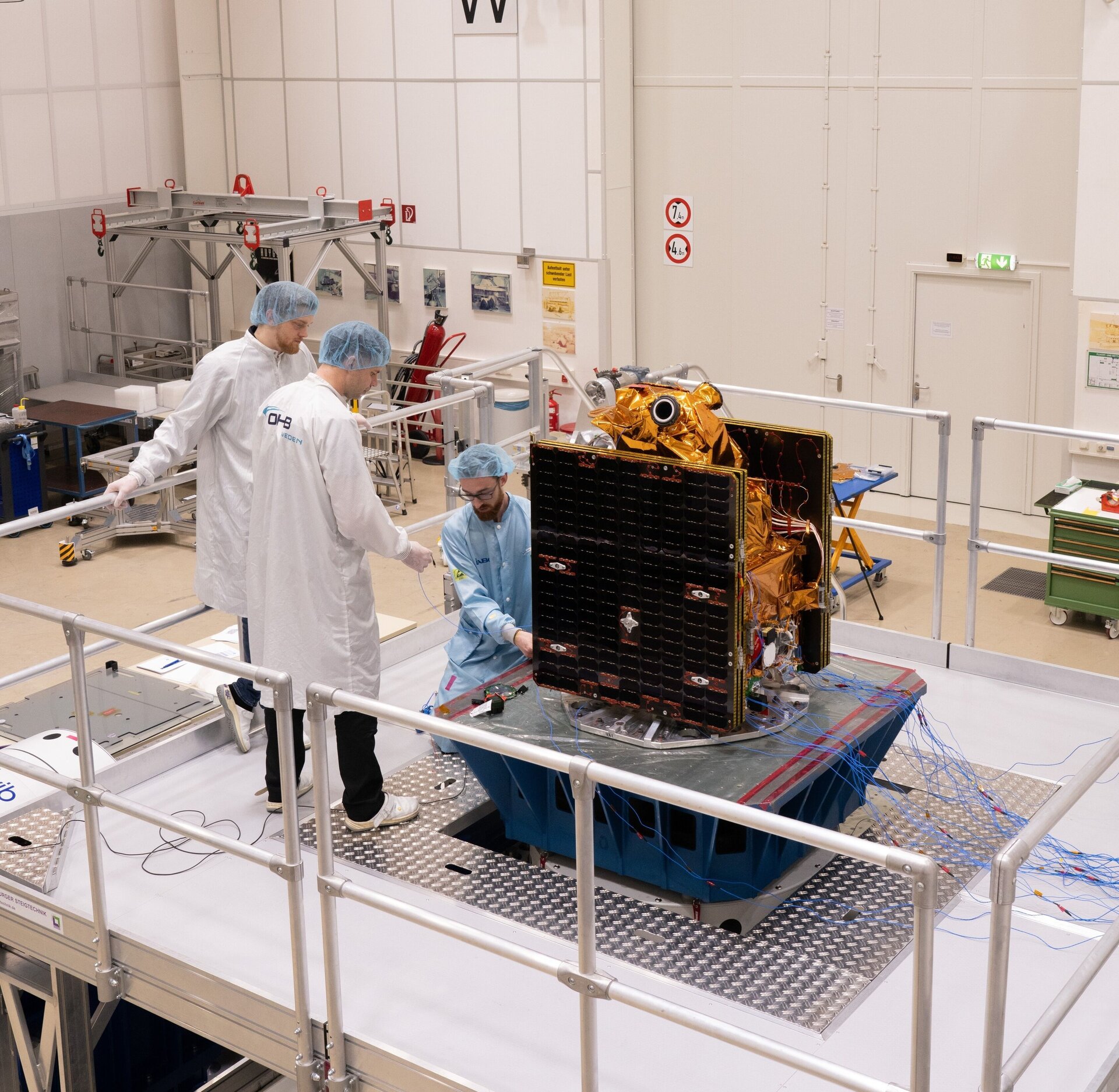14/03/2024
23 views
0 likes
ESA’s Arctic Weather Satellite has passed its environmental test campaign with flying colours – meaning that the satellite has been declared fit for liftoff and its life in the harsh environment of space.
This new satellite, which is slated for launch in June, has been designed to show how it can improve weather forecasts in the Arctic – a region that currently lacks data for accurate short-term forecasts.
The set of final tests were carried out at IABG in Germany and included positioning the satellite on a shaker to simulate the vibrations it will have to endure during liftoff, and enclosing it in a thermal vacuum chamber where it was exposed to the extreme swings in temperature that it will experience as it orbits Earth.
Ville Kangas, ESA’s Arctic Weather Satellite Project Manager, said, “This last testing programme is extremely important to make sure that the satellite is robust enough to survive launch and the harshness of the space environment. I am extremely happy to say that everything went very well and I extend my thanks to IABG and OHB Sweden for their diligent work.”
The Arctic Weather Satellite is equipped with a 19-channel cross-track scanning microwave radiometer, which benefits from the heritage technology of the Microwave Sounder developed for the MetOp Second Generation satellites.
The instrument will provide high-resolution humidity and temperature soundings of the atmosphere in all weather conditions.
The satellite is actually the forerunner of a potential constellation of satellites, called EPS-Sterna, that ESA would build for Eumetsat if this first prototype Arctic Weather Satellite works well.
The EPS-Sterna mission is envisaged as a constellation of six microsatellites in three orbital planes to supply an almost constant stream of temperature and humidity data from every location on Earth.
This would, for the first time, allow for very short-range weather forecasting, or ‘nowcasting’, in the Arctic. The set of six microsatellites would be replenished three times.
While the Arctic is the focus, meteorologists will also use the constellation to improve weather forecasts globally.
Embracing the concept of New Space, the prototype Arctic Weather Satellite has been developed and built on a very tight schedule of just 36 months and on a tight budget.
Ville added, “Led by our prime contractor, OHB in Sweden, over 30 companies have been involved in the development of the mission. I think I can I speak for everyone in saying how thrilled we are to see the satellite fit and well and ready for its next steps.”
The satellite is now being shipped back to Sweden for a last few checks before it is packed up ready for shipment to the Vandenberg launch site in California in the US.

